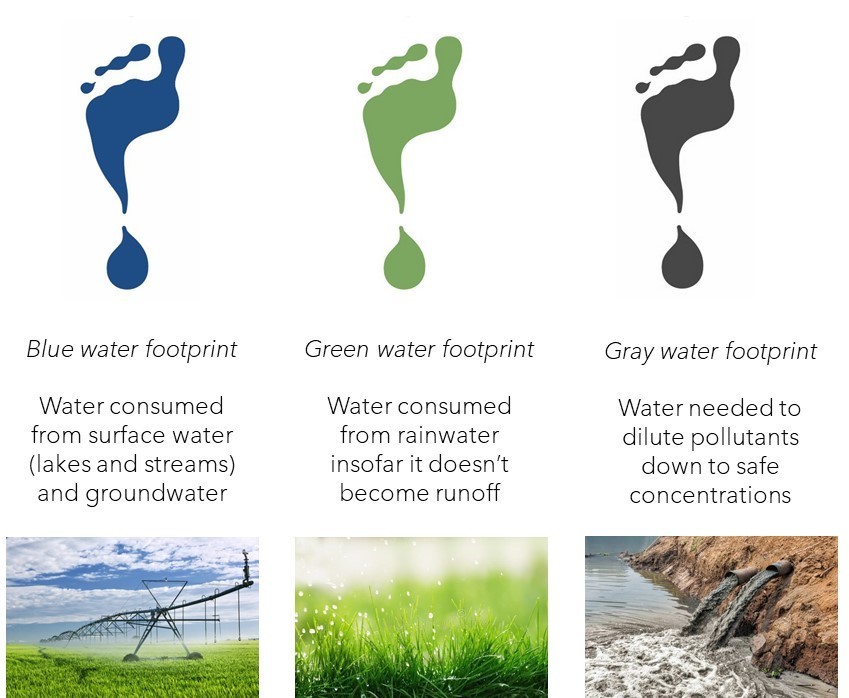Promoting water sustainability of financial institutions
Water Footprint Assessment can inform meaningful financial institutional action for the protection of Earth’s liquid natural resources.

The GEC Insights series is a new curated collection of online articles at the intersection of environment and economics, each written by leading thinkers from the worlds of business, government and civil society. Part of our Economics for Nature project, they bring together diverse perspectives to answer the question: how can we re-design our economies to protect and restore nature?
Financial institutions (FIs) are more powerful than ever before, but hardly wield their influence to promote water sustainable business practices. Lagging behind companies in their quest for wise corporate water practices, FIs still turn a blind eye to the implications that their financed activities have on water resources. This is unfortunate, as investment decisions made today will greatly affect the state of water resources tomorrow. Insights from the scientific field of Water Footprint Assessment (WFA) can help straddle the existing knowledge gap, improve investment decision-making processes, while informing meaningful FI action for the protection of Earth’s precious liquid natural capital.
A shared responsibility
Reducing humanity’s water footprint to sustainable levels constitutes one of the grand challenges of the 21st century. Four billion people are living in areas that experience water scarcity at least one month of the year, while water pollution levels are surging in most of the world’s river basins. These and many other signals illustrate how our economic set-up allows for the appropriation of freshwater resources to human uses beyond what our planet can sustainably support. This overuse comes at the cost of nature, harming ecosystems and dwindling biodiversity, as well as of societies, where competition over limited water resources spurs inequality and marginalization of vulnerable user groups.
Dampening water use will require a substantial, if not transformative change of many economic sectors, warranting swift action by all actors involved. Usual suspects include ministries, regulators, farmers and companies, but also consumers and investors share the responsibility for moving towards the goal of water sustainability at local, national and global scale. It is the latter–investors–that I want to draw attention to here, as they form a powerful yet enigmatic actor group that until recently managed to stay in the background in discussions about water stewardship. Moreover, they are lagging behind efforts made by companies to adopt water-wise business practices.
But first I make a sidestep to the scientific field of Water Footprint Assessment (WFA), as I believe WFA can provide valuable insights towards reducing our economies’ pressure on freshwater resources in general, and to improve the water performance of FIs in particular.
Insights from Water Footprint Assessment
Central to WFA is the water footprint (WF) concept, which at its core is an indicator of water use and pollution associated with the production of goods and services. Multidimensional by design, a WF consists of three components: the green WF measures the consumption of green water resources (rainwater); the blue WF refers to the consumption of groundwater and surface water; and the grey WF is a measure of freshwater needed to assimilate pollutants.

WFA is predicated on two essential notions that give guidance on potential solution pathways. The first is that freshwater is a global resource. In globalizing our economies, a geographical disconnect is created between locations of production and consumption, through trade. Trade policies, however, are not informed by water concerns (nor by solidarity), hence they lack incentives for sustainable use of water. What is more, global trade increasingly drives local water allocation and patterns of unsustainable water consumption. If we are to arrive at sustainable use of water everywhere, we need to carefully sift through global supply-chains and make these interwoven value chains more transparent.
The second notion is that although water is a renewable resource, its renewal rates are limited. Water footprints of companies, regions and virtual water trade patterns must therefore be studied in the context of these limitations. Total WFs need to stay below local ecological thresholds to prevent overuse and scarcity, e.g. by setting a WF cap at the catchment level that accounts for environmental flow requirements. WFs of individual commodities or activities should be referenced against reasonable water use levels for that commodity of activity, to avoid unnecessary wastage of water. This can be done by formulating WF benchmarks per commodity or activity based on best available practices.
“ Financial institutions (FI), including asset owners like banks and pension funds, but also asset managers, contribute to unsustainable water use and trade patterns by means of their investment practices.”
The role of financial institutions
Financial institutions (FI), including asset owners like banks and pension funds, but also asset managers, contribute to unsustainable water use and trade patterns by means of their investment practices. Often unbeknownst to themselves, they have an enormous impact on the state of water resources through the activities they finance. A new mining company in for example Rwanda will–if not incentivized/regulated properly–pollute local water systems for years (viz. establish a grey WF), and an extension of their Food and Beverage portfolio in Central America may gulp non-renewable groundwater (viz. increase the blue WF) for decades to come. At the same time, investors’ bottom line is at peril too, with reputational, regulatory or physical water risks increasingly materializing.
Yet a recent study found that both FI’s water acumen and water policies are disquieting. There is a clear need for FIs to (re)formulate their subpar investment policies to better reflect concerns over water sustainability. This transcends merely addressing compliance issues or mitigating water risks internally. Rather, drawing on insights from WFA, wise water policies should consider the claims that potential investees will put on water resources, in the context of local ecological thresholds. They should also address inefficient water practices proposed by investees, so as to avoid wasting water needlessly. Furthermore, they will have to be mindful of unequal water distributions incurred by their taking a share of the local water pie. These concerns are not only relevant at the level of an investee’s direct operations, but especially across fence lines in supply chains. Such claims and concerns can and should be quantitatively substantiated, rather than only idealistically described. Mainstreaming existing WF indicators into the right framework is a first, readily doable step in this regard. Finally, wise investment policies will allow for the disclosure of water information related to investment activities, to hold the FI accountable and authenticate their social license to operate.
Outlook
WFA has proven to resonate with stakeholders within and beyond the walls of science, and now offers important insights to investors who are only just now starting to assert themselves in the water arena. While there is a lot of expertise out there to better inform FI’s water policies, their impact hinges on whether or not water indicators will be assigned enough weight (among all other performance criteria an investor relies on) to be able to steer investments clear of unsustainable water practices and to leverage private finance for good. Sensing the current momentum, however, I am hopeful that it will. Remember that it took FIs a few decades to get from understanding the need to reduce their (portfolio) carbon footprint, to taking meaningful action. With the lessons from the climate discussion in mind, let’s see to it action kicks in sooner when it comes to reducing their water footprint.
Dr Rick Hogeboom is Executive Director at the Water Footprint Network, and also Assistant Professor in Multi-disciplinary Water Management at the University of Twente, the Netherlands.
Image credit: Photo by Jack Anstey on Unsplash
The Green Economy Coalition believes that dialogue and discussion are cornerstones of effective policy-making. Therefore we publish articles from a broad range of contributors, covering a wide range of views. The views expressed by our guest authors do not necessarily reflect the policy or positions of the GEC; furthermore, since our coalition and our contributors are reflective human beings navigating a complex world, our views are subject to change over time.


